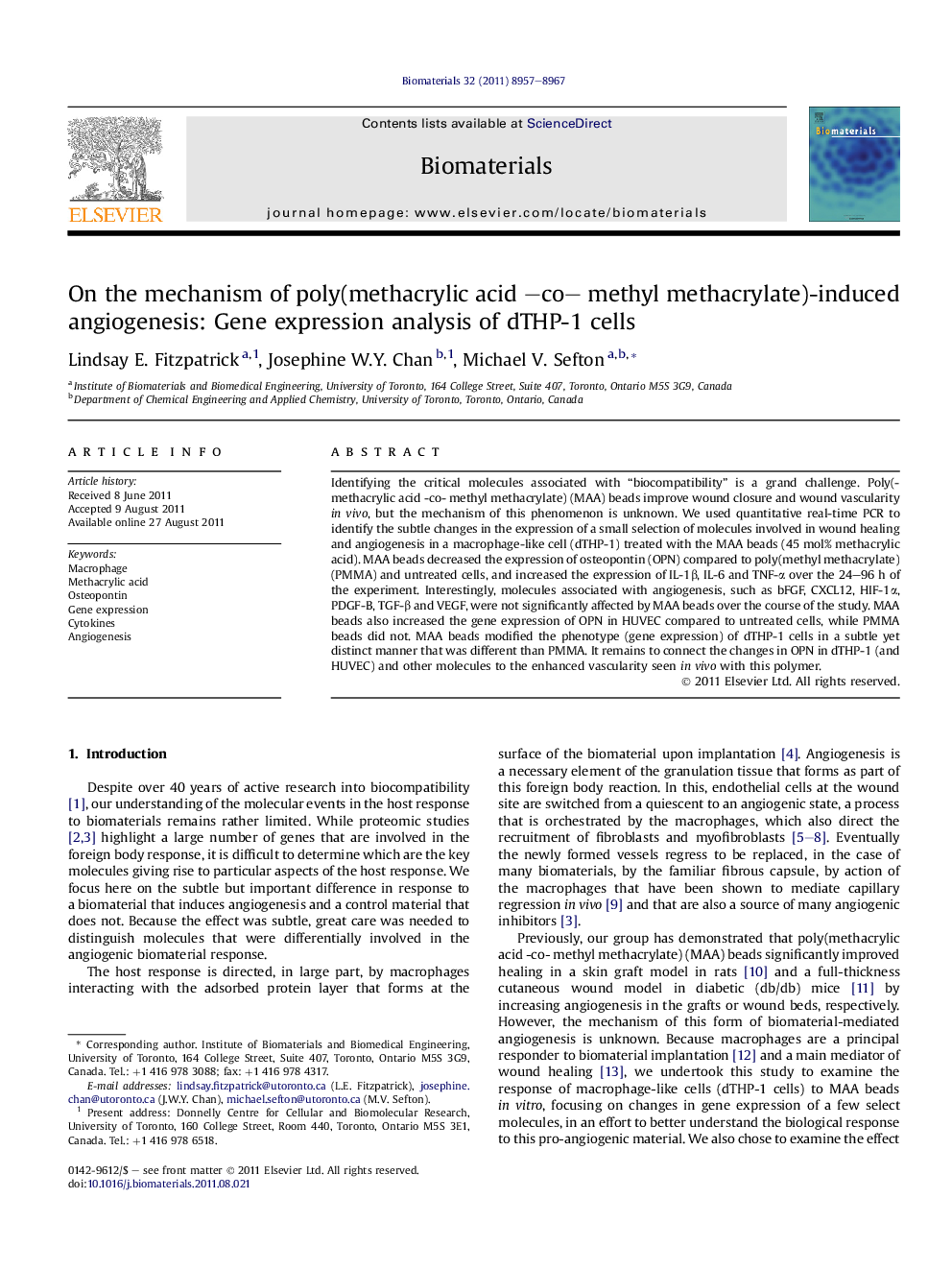| کد مقاله | کد نشریه | سال انتشار | مقاله انگلیسی | نسخه تمام متن |
|---|---|---|---|---|
| 7117 | 535 | 2011 | 11 صفحه PDF | دانلود رایگان |

Identifying the critical molecules associated with “biocompatibility” is a grand challenge. Poly(methacrylic acid -co- methyl methacrylate) (MAA) beads improve wound closure and wound vascularity in vivo, but the mechanism of this phenomenon is unknown. We used quantitative real-time PCR to identify the subtle changes in the expression of a small selection of molecules involved in wound healing and angiogenesis in a macrophage-like cell (dTHP-1) treated with the MAA beads (45 mol% methacrylic acid). MAA beads decreased the expression of osteopontin (OPN) compared to poly(methyl methacrylate) (PMMA) and untreated cells, and increased the expression of IL-1β, IL-6 and TNF-α over the 24–96 h of the experiment. Interestingly, molecules associated with angiogenesis, such as bFGF, CXCL12, HIF-1α, PDGF-B, TGF-β and VEGF, were not significantly affected by MAA beads over the course of the study. MAA beads also increased the gene expression of OPN in HUVEC compared to untreated cells, while PMMA beads did not. MAA beads modified the phenotype (gene expression) of dTHP-1 cells in a subtle yet distinct manner that was different than PMMA. It remains to connect the changes in OPN in dTHP-1 (and HUVEC) and other molecules to the enhanced vascularity seen in vivo with this polymer.
Journal: Biomaterials - Volume 32, Issue 34, December 2011, Pages 8957–8967